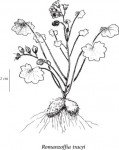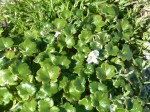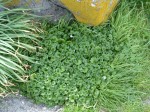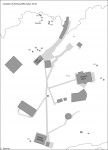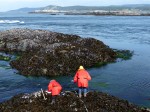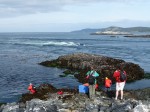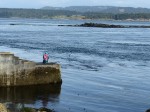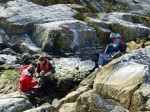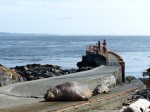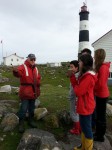A week ago we asked Paul Cotrell, the Pacific Marine Mammal Coordinator of Fisheries and Oceans Canada to assist us in starting a program of annual elephant seal pup tagging by tagging this years elephant seal pup born on January 14.
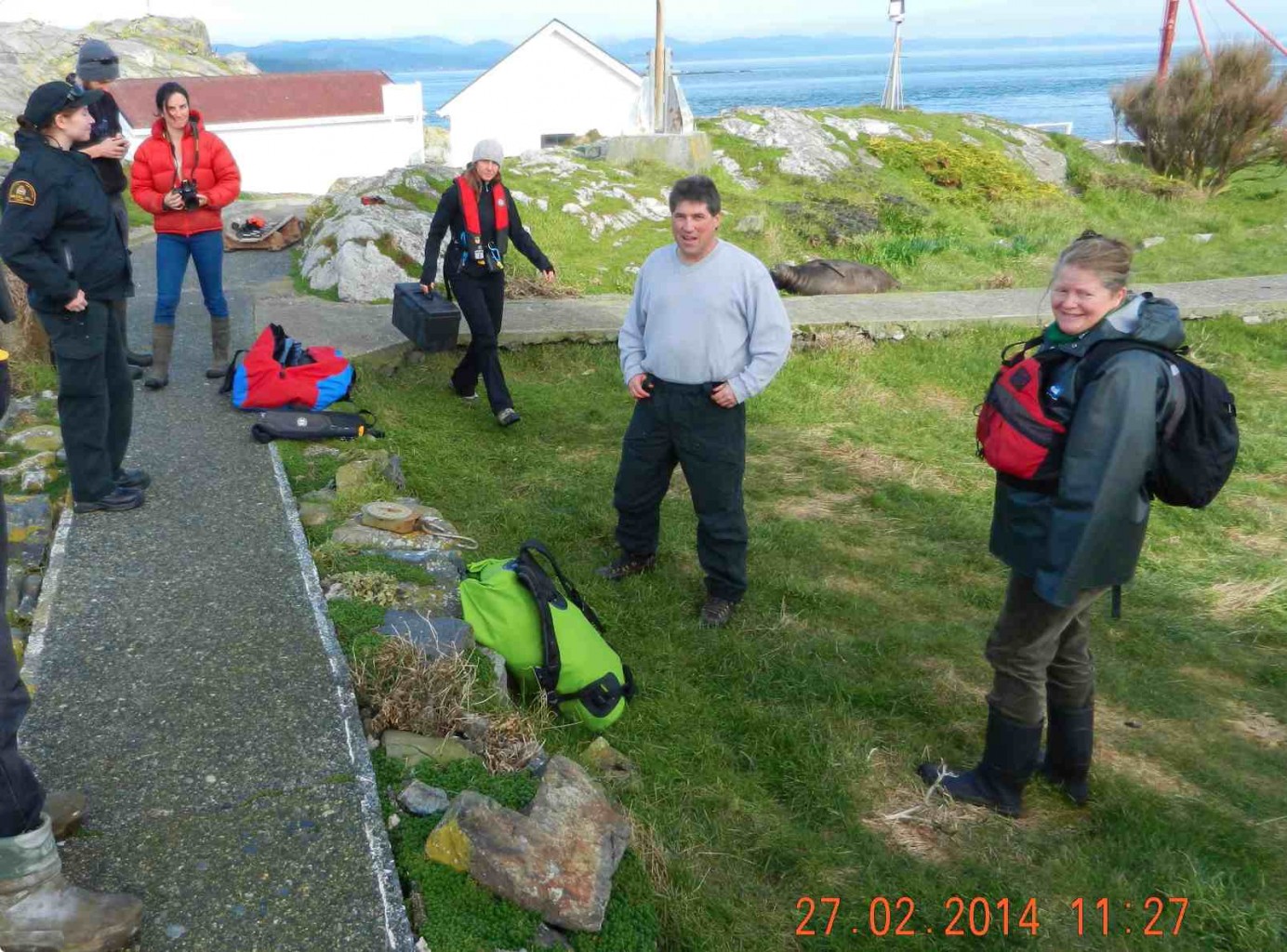 This morning Erik Schauff drove the college boat Second Nature out to the Ecological Reserve to transport Paul Cotrell, Sheena Majewski from PBS in Nanaimo and Mya Cormie from the Victoria DFO office. Also on board were biology faculty member Ann Stewart, as well as Barry Herring and myself
This morning Erik Schauff drove the college boat Second Nature out to the Ecological Reserve to transport Paul Cotrell, Sheena Majewski from PBS in Nanaimo and Mya Cormie from the Victoria DFO office. Also on board were biology faculty member Ann Stewart, as well as Barry Herring and myself
We joined Alex Fletcher and Virginie Lavalie , Ecoguardians at the ecological reserve in helping with the tagging process. We had planned to do this earlier in the week but the East winds were still blowing. As it was we hit a perfectly calm day today.
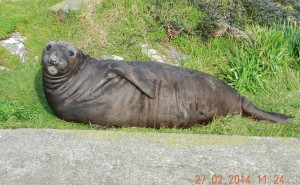
The pup was on the grass by the weather instrument and was somewhat bigger than we had estimated, probably 250-300 pounds.
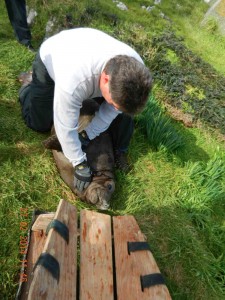
Our first attempts to get it on a weighing platform failed as the pup was just too large and difficult to control. Paul decided in order to avoid any further stress, to just do the tagging. Alex held the rear flippers and Sheena used a tagging tool to insert the tags into the webbing of each of the rear flippers.
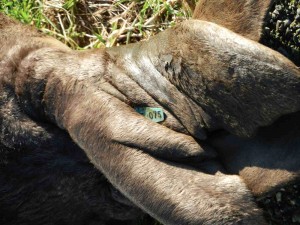
Tag on rear flipper of elephant seal pup
A set of turquoise tags numbered F075 and F076, with numbers facing outside were added to the each of the rear flippers. The colour of the tags is important because each research program using tagging has to use unique identifiable colours and numbers.
The first elephant seal to be born on Great Race Rocks in 2009, was tagged with red tags by NOAA scientists when it came ashore in Port Angeles.
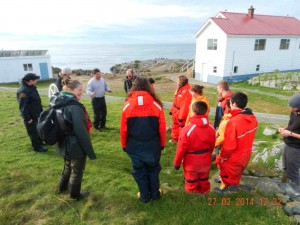
Paul Cotrell telling Pearson College students about the hazards of marine mammal tagging.
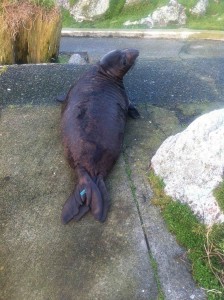
Pup moving around the following day
A group of Anne’s students came out from Pearson College to observe the newly tagged pup, it being the first one tagged in Canada.
Initially after tagging, the pup moved off about 6 metres and settled down in a grassy area.
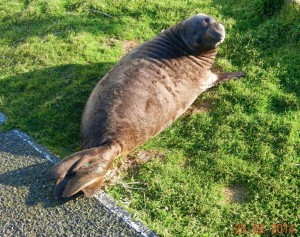
Pup settled down on the lawn the next morning.
The next morning, the pup had returned to the same spot where he had been tagged. He moved around a short distance during the day.
Pam Birley from England also took some pictures of the process using camera and has posted these on her Flickr site

